The Ayr DSFB bailiffs and ART staff will be cleaning gravel before spawning later this year to attempt to improve productivity. We are planning to clean sites where the bed is concreted/ compacted or silted. There may be several reasons for these issues however we believe that through direct intervention, temporary improvements can be achieved and hopefully this will result in greater egg survival.
Before we can go ahead with this SEPA asked that we assess each site using semi quantitative electro fishing. We will repeat these surveys next year and compare results. If successful, we hope to continue with this strategy for as long as necessary.
We’ve been assisted by Katie this week. Katie is my 14 year old daughter who is on holiday from school and decided that she would like to help to gain work experience. In reality, her mum’s on holiday and we are so busy that taking time off this week wasn’t possible so she decided to come along and help. It all good experience and I think she’s enjoyed it so far. We headed for Tarholm on the Ayr first thing to recod current fish numbers in the side channel where previously we have found egg survival to be poor. Once again we found a few grayling which is encouraging. There’s more about this year than I’ve seen before.
From Tarholm we headed to Kames area at Muirkirk where we have a site just upstream of the old games Colliery. This site produces a few salmon each year however could be better. The bed is concreted and we presume this is due to iron inputs from historic and more recent mining. There’s also bank erosion driven in part by livestock and man made alterations. After fishing the site, we took a few willow cuttings and plugged them deep into the banks. Hopefully these cuttings will root and help hold the banks together. The added benefit is that if they do root, they will grow over the waters edge offering shade and safety for juvenile and possibly adult fish.
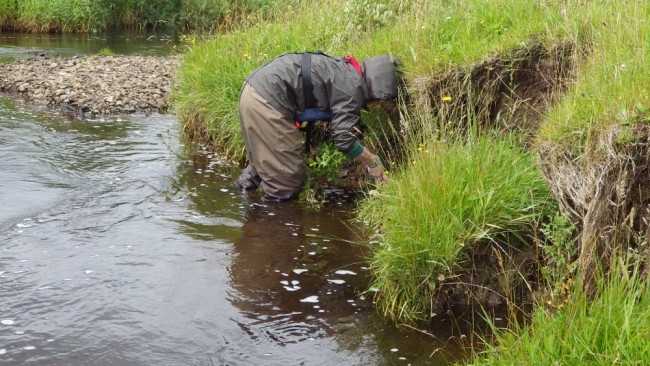
Katie planting willows at the Kames site. Salmon numbers were better than expected but could be improved.
We did the same at another site near Spierslack where once again things could be improved. The photo below illustrates just how much erosion is taking place at this site. There hardly a tree in sight and sheep graze the area. Electrofishing complete, we again set about planting willow. We used two different species that we found growing nearby.% years from now I hope this site will have stable banks and improved fish cover as a result of this work. If we can find some woody debris nearby, we may try and incorporate them into the site to increase diversity and protect banks. These simple measures can bring huge benefits and are the sort of simple improvements that clubs could do to help improve their beats.
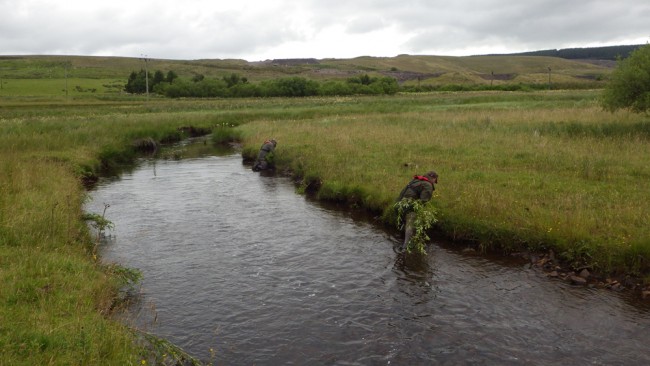
Not a tree in sight so hopefully the willow cuttings will survive the attentions of the sheep and develop some serious cover and shade for the river. By planting trees in bare and exposed areas, this could help mitigate projected water temperature rises of around 4ºC over the next 50 years as a result of climate change.
Further downstream at Nether Wellwood, we cut more willow and stuck them into the eroding bank where the River Ayr Way is eroding. This will need much more work, but time was short and at least it’s a start.
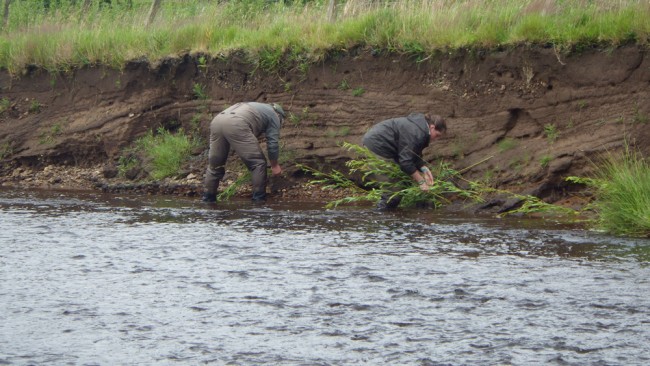
Severe erosion contribution a huge amount of sediment to the river each year. Hopefully the willows will start to reduce this problem.
We’ve more sites to survey and much more willow to plant before the end of this season. Any Clubs wishing guidance or our help, please get in touch.
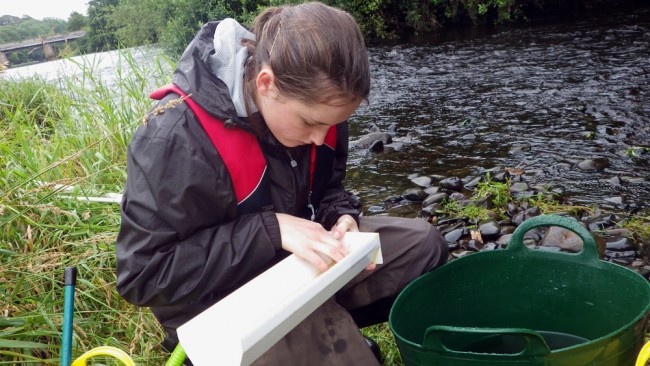
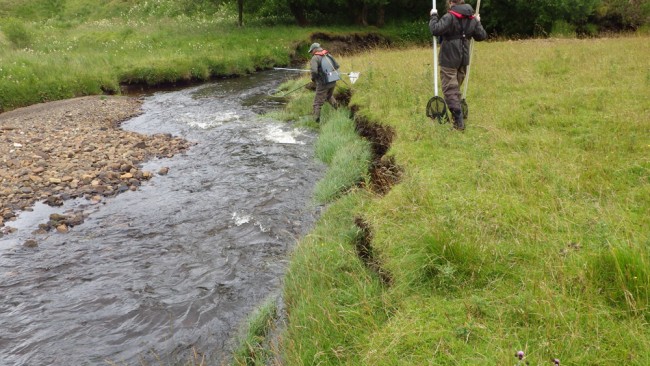


I might have some spare damsons and sloe saplings in the new year, would they be any use to you for planting near banks?